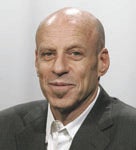Make room for Ray Lewis on Oprah’s couch
Published 10:13 am Thursday, January 31, 2013
Column: Associated Press, by Jim Litke
Believe whichever version of the Ray Lewis story you want. It hardly matters.
Sports Illustrated said Lewis was in touch with a company called Sports With Alternatives To Steroids, or SWATS, just hours after tearing his triceps in October, loading up on deer-antler spray and a host of other mumbo-jumbo remedies — holographic stickers, negatively charged water, underwear exposed to radio waves — in a desperate bid to get back on the field.
Lewis told the magazine that he asked SWATS owner Mitch Ross for “some more of the regular stuff” on the night of the injury. But during an appearance on media day at the Super Bowl, he refused confirm that or discuss any other details in the SI report, insisting he recovered by dint of hard work alone.
“I’ve been in this business 17 years, and nobody has ever got up with me every morning and trained with me. Every test I’ve ever took in the NFL — there’s never been a question of if I ever even thought about using anything,” Lewis said. “So to even entertain stupidity like that …”
Both versions could be true, as it turns out, since Lewis’ ferocious appetite for working out has been well documented and there’s not a shred of scientific evidence that any of the products he reportedly received actually speed up muscle repair and growth — including the widely banned substance, IGF-1 (insulinlike growth factor-1), or at least the extract that SWATS boasted about using in its spray. And since Lewis passed all his drug tests, the only thing that really matters in this instance is intent.
Let’s give Lewis the benefit of the doubt for the moment, and assume he believed not only that the supplements SWATS provided were free of any performance-enhancers banned by the league, but also that they worked. So what should we make of the fact that one of the NFL’s longest-serving and much-respected veterans was taken in by a two-man operation selling crackpot cures and potions out of the back of a gym in Fultondale, Ala.?
Plenty.
For one thing, it tells you the line between legal and illegal PEDs is already blurry, that athletes in every sport will ingest just about anything they believe will work without tripping a positive test. Former linebacker Bill Romanowski used to tote around a briefcase full of pills at the Super Bowl — and open it on request — to show reporters how many different ones he swallowed daily to ward off injuries and keep him playing at his peak. Athletes in every sport mix their own cocktails — vitamins, minerals, proteins, amino acids — in hopes of doing the same. Given that the people who draw up the substance-abuse policies for the various leagues and sports contend they draw the line at stuff that actually enhances performance, the athletes’ efforts seem like a pointless exercise.
Except that it’s far from that. Players who can afford to train at high altitude or sleep in oxygen tents while rehabbing injuries — both allowed by nearly every sanctioning body — may actually benefit by increasing their count of oxygen-carrying red blood cells in the same way that taking the banned substance erythropoietin (EPO) would. There are a dozen other similarly exotic and expensive schemes involving the use of “approved” techniques or supplements that get passed on by word of mouth, all of them employed in the hopes of providing even the slightest advantage.
While those distinctions still matter to the people in charge, fans increasingly yawn each time a big-name ballplayer is implicated, feigning shock for a moment before going back to voting with their feet and the remote control. Our games have never been more popular despite all the disclosures — Alex Rodriguez was ensnared in yet another doping investigation only Tuesday — because nearly everybody else in society uses performance-enhancers of one kind or another, at some time or another. And they’re aware that ballplayers are the last people who can’t bring their PEDs to the workplace.
Besides, there are already a wide range of therapies that have proven successful in treating injuries suffered by the rest of us that athletes can’t touch. The more we learn what works and how, the more common sense argues that ballplayers should be able to avail themselves of the same treatments, at the very least those that safely accelerate the healing process. As the cheats have proven over and over, the science of performance-enhancing is always a step or two ahead of the tests, and that gap is only likely to widen going forward.
The cat-and-mouse game isn’t solving anything. It’s time to start thinking realistically about which PEDs could make athletes better and safer playing the games, especially since we keep demanding better performances and the occasional public trial or teary-eyed confession — without much real concern for their health.
Either that, or Oprah is going to need a bigger couch.
Jim Litke is a national sports columnist for The Associated Press.


